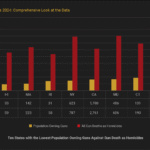Buying your first home is an exciting milestone. It’s a step toward independence, a space to call your own, and often a long-term investment in your future. But with all the excitement comes a fair share of challenges, especially when it comes to managing finances. For first-time homebuyers, some common mistakes can make the process more stressful—and expensive—than it needs to be. By planning carefully and avoiding these pitfalls, you can make smarter choices and save yourself a lot of trouble down the road.
Let’s look into the five biggest financial mistakes first-time homebuyers make and how you can steer clear of them.
1. Failing to Budget for All Costs
When you’re buying a home, it’s easy to focus on the purchase price. After all, that’s the big number that gets all the attention. But the truth is, the price tag on the house is just the beginning. First-time buyers often underestimate the additional costs that come with homeownership, which can leave them scrambling to cover unexpected expenses later.
For example, closing costs—covering things like loan origination fees, home appraisals, and title insurance—can add up to 2% to 5% of the home’s purchase price. On a $300,000 home, that’s anywhere from $6,000 to $15,000. Property taxes and homeowners insurance are recurring expenses you’ll need to account for in your monthly budget. And let’s not forget about ongoing maintenance and repair costs, which can catch many new homeowners off guard.
So, how do you plan for all these expenses? Start by doing your homework. Tools like a house down payment and mortgage calculator can help you estimate how much money you’ll need upfront and what your monthly mortgage payments will look like. This calculator also allows you to explore different down payment amounts and loan terms so you can find a plan that works for your budget.
Taking the time to budget for all costs—not just the purchase price—can save you from financial stress and ensure you’re truly prepared for homeownership.
2. Not Checking Credit and Debt-to-Income Ratio
Your credit score and debt-to-income (DTI) ratio are two of the most critical factors lenders consider when approving a mortgage. Yet many first-time homebuyers overlook these numbers or assume they’re in good shape without checking.
A strong credit score not only makes it easier to get approved for a mortgage but also helps you qualify for better loan terms and lower interest rates. On the other hand, a weak credit score can limit your options and lead to higher monthly payments. Similarly, your DTI ratio—calculated by dividing your monthly debt payments by your gross monthly income—plays a big role in how much you’re allowed to borrow. Lenders typically prefer a DTI ratio below 43%, but the lower, the better.
To avoid surprises, start by pulling your credit report and reviewing it for errors. If your score is lower than you’d like, focus on improving it by paying down high-interest debt and avoiding new loans or credit card applications. Keep an eye on your DTI ratio as well, and work to reduce it by paying off existing debts or increasing your income.
3. Overlooking Loan Options and Programs
Not all mortgages are created equal, and first-time homebuyers often make the mistake of assuming their options are limited to one or two loan types. In reality, there’s a wide range of loan programs designed to meet the needs of different buyers.
For example, conventional loans are popular for their flexibility, but they often require a higher credit score and a larger down payment. If you’re looking for a lower down payment option, FHA loans might be a better fit, as they allow you to put down as little as 3.5%. Veterans, active service members, and eligible spouses can benefit from VA loans, which offer no down payment requirements and competitive interest rates. And if you’re buying in a rural or suburban area, USDA loans could help you secure a home with no money down.
Beyond these loan types, there are also down payment assistance programs and grants available to first-time buyers. These programs, often offered by state or local governments, can provide valuable financial support to make homeownership more accessible.
4. Skipping Preapproval Before House Hunting
Shopping for a home without getting preapproved for a mortgage is like walking into a store without knowing how much money is in your wallet. It sets you up for disappointment and can even put you at a disadvantage in a competitive market.
Preapproval is a process where a lender reviews your financial information—like your income, credit score, and debt—and provides you with a letter stating how much they’re willing to lend you. This gives you a clear idea of your budget and shows sellers that you’re a serious buyer.
Without preapproval, you might end up falling in love with a home that’s out of your price range. Worse, you could lose out on your dream home to another buyer who’s already preapproved. While prequalification is a less formal process that can give you a rough estimate, it’s not as reliable as preapproval.
Before you start house hunting, take the time to get preapproved. It’s a simple step that can make the entire process smoother and more enjoyable.
5. Underestimating Long-Term Costs
When you’re calculating how much house you can afford, it’s important to think beyond the monthly mortgage payment. Homeownership comes with a variety of long-term costs that first-time buyers often overlook.
Utilities, for example, can be significantly higher in a larger home than in an apartment. Maintenance and repairs are another major expense—experts recommend setting aside 1% to 3% of your home’s value each year for upkeep. On a $300,000 home, that’s $3,000 to $9,000 annually. Property taxes and homeowners association (HOA) fees are other costs that can add up over time.
The best way to prepare for these expenses is to build them into your budget from the start. Create an emergency fund specifically for home repairs, and consider opting for a home warranty to cover major systems and appliances.
Buying your first home is an exciting journey, but it’s also a major financial commitment. By avoiding these five common mistakes—failing to budget for all costs, neglecting your credit and DTI ratio, overlooking loan options, skipping preapproval, and underestimating long-term costs—you can set yourself up for success and make the experience more enjoyable.
Take your time, do your research, and with the right preparation, you’ll be well on your way to turning your homeownership dreams into reality.




